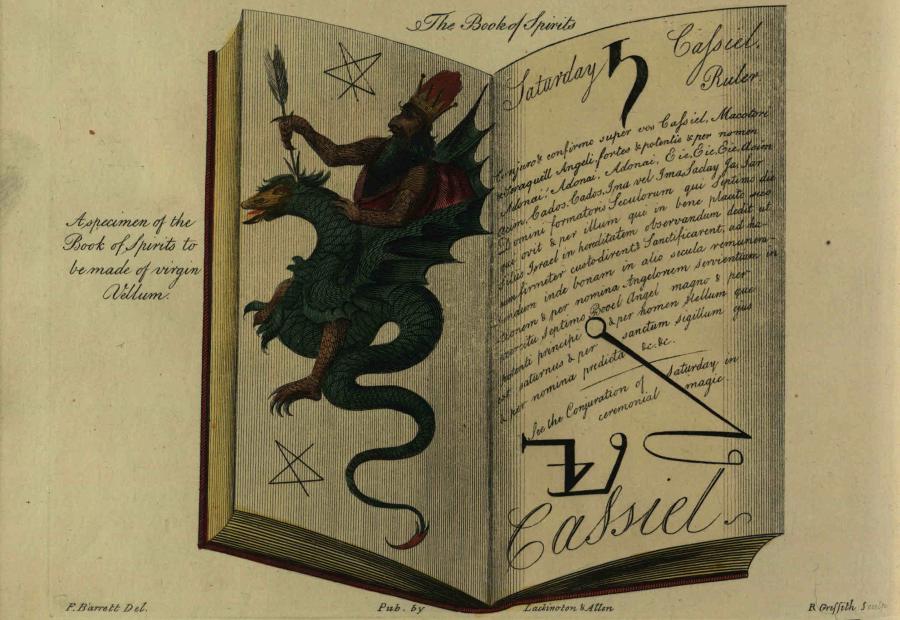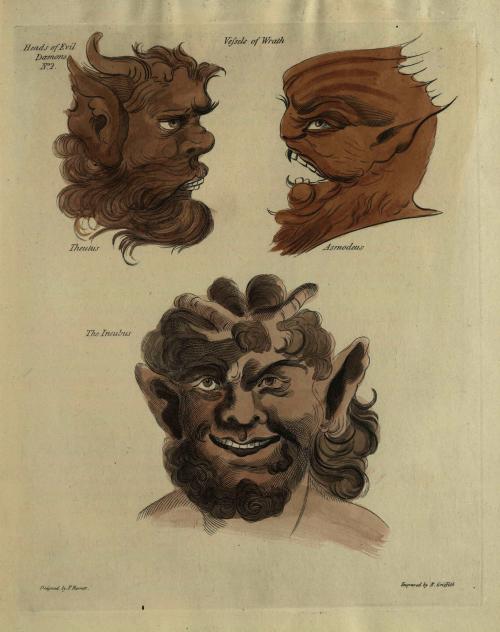Eye of Serpent and Tongue of Frog: Francis Barrett’s Magus


Halloween is upon us, and with it come tales of the supernatural, magic, and the occult. Our current Halloween traditions originate with both the Celtic celebration of Samhain (pronounced “sow-when”) and the Christian All Saints’ Day, but many of us find that anything spooky or other-worldly enhances the holiday. Francis Barrett’s The Magus, or Celestial Intelligencer is a fun addition to your Halloween reading.
Little is known of Francis Barrett’s early life, but he is believed to have been born in the late 1700s (most likely between 1770 and 1780) in London. This was during the Enlightenment, an intellectual movement which was characterized by logic and reason (indeed, it is also called the Age of Reason), with Enlightenment scholars eschewing magic. Barrett, however, grew to adulthood at the end of this era and wrote The Magus during the early days of the Romantic period, during which people turned to nature and the past, and glorified emotion and art. In The Magus we see an example of Romanticism: a strong focus on nature, in the form of natural magic, and a view to the past, particularly the medieval period.

Barrett’s The Magus is a compilation of Cornelius Agrippa’s 16th-century Three Books of Occult Philosophy and Robert Turner’s 17th-century translation of Peter de Abano’s 1496 handbook of natural magic, Heptameron. It is both informational and practical, providing a background into occult practices and plenty of instructions and recipes for natural magic. For example, Barrett tells us that placing the tongue of a frog against a woman’s chest, just over her heart, will compel the woman to answer whatever is asked of her. The eye of a serpent, taken while the serpent is still alive and without killing the serpent, is said to alleviate eye pain…though, presumably, not so much for the serpent!
He shares the influences of the planets, stories of fallen angels and demons, and his careful translation of the Kabbalah. He concludes with “an account of the lives and writings of the ancient and modern magi, cabalists, and philosophers,” such as Aristotle, the Babylonians, and the aforementioned Agrippa and de Abano. The work contains diagrams, symbols, and illustrations, the last of which are hand-tinted and remain vibrant.
Halloween is a time of magic and mystery, as well as fun, and The Magus is easily all three. Take a look at it, and then see what kinds of magic you can stir up this Halloween!
Thank you to Shannon Kupfer, Digital Initiatives Librarian at theState Library of Ohio, for this week’s post!



Leave a Reply
You must be logged in to post a comment.